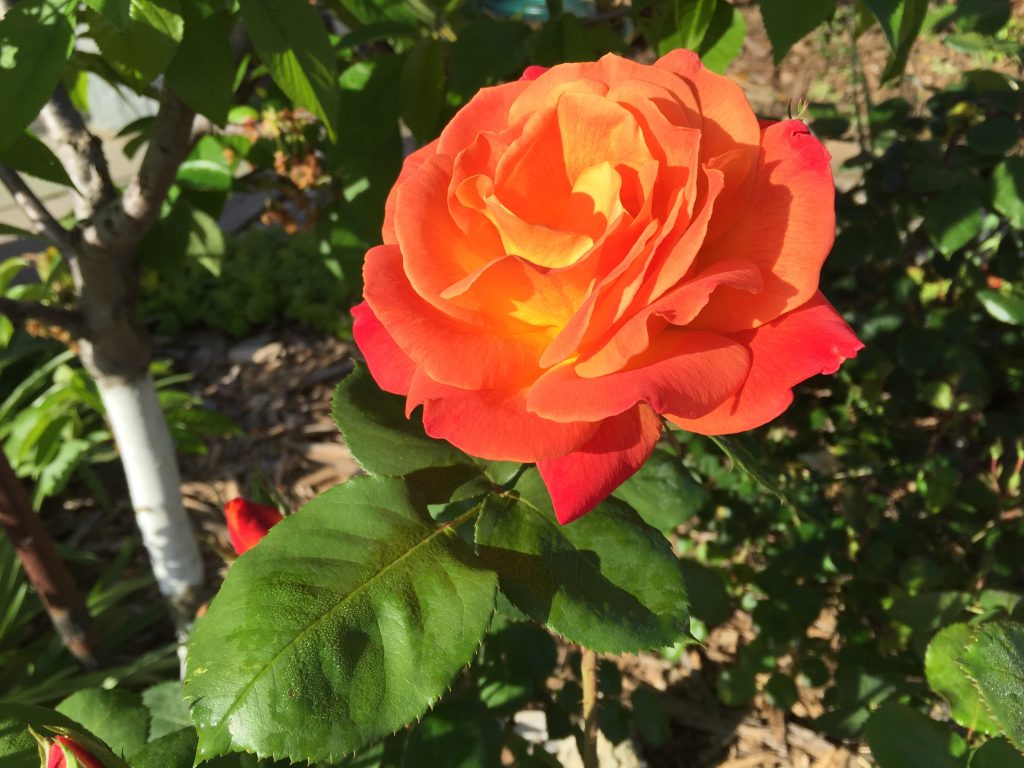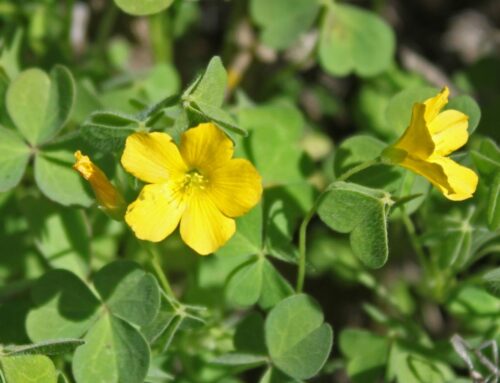It’s easier to list the pests and diseases that do not affect members of the rose family.

Flowers of the rose family are famous for being showy. If you look closely, you can see that the bases of the petals, sepals, and stamens are fused together into a cup-shaped structure called a hypanthium.
Photo by Stuart Russell
By Kate Russell

Kate Russell
The rose family (Rosaceae) includes a surprising number of popular fruit trees. Apples and pears are in the rose family. So are stone fruits, such as almonds and nectarines. Cane fruits, such as blackberries and raspberries are part of the rose family. So are strawberries.
How can all these different plants be related? Let’s find out.
The rose family is large and diverse. It contains herbs and shrubs, along with all those trees.
But they share many common characteristics. Most of them are deciduous, deep-rooted, woody perennials. In general, leaves are often arranged spirally, with serrated edges. You may see spines along the midrib and extra-floral nectaries are often present.
 Flowers of the rose family are famous for being showy. If you look closely, you can see that the bases of the petals, sepals, and stamens are fused together into a cup-shaped structure called a hypanthium.
Flowers of the rose family are famous for being showy. If you look closely, you can see that the bases of the petals, sepals, and stamens are fused together into a cup-shaped structure called a hypanthium.
While most members of the rose family are edible, the seeds often contain amygdalin, which can release cyanide when chewed. (But you’d have to eat an awful lot to have any problems.)
Not all members of the rose family are lovely and delicious. Some can be a royal pain. Pale biddy-biddy (‘Acaena pallida’) is a rose family member native to the Southern Hemisphere. But it is registered as a noxious weed elsewhere.
 Even our familiar thornless firethorns (Cotoneaster), hawthorns (Crataegus), thorny Pyracantha, and roses are technically invasive plants.
Even our familiar thornless firethorns (Cotoneaster), hawthorns (Crataegus), thorny Pyracantha, and roses are technically invasive plants.
Birds eat the seeds found in our landscapes, they then fly away and deposit those seeds where they will grow and displace native plants. This causes a domino effect of trouble for native birds, insects, and plants.
Rose family members grow best in locations with loose soil, good drainage, and full sun. Several of these plants have chilling requirements that must be fulfilled before fruit can be produced, so be sure to pick varieties and cultivars that match the chill hours expected in your yard.
It would probably be easier to list the pests and diseases that do not affect members of the rose family. The same characteristics that make them appealing to us attract insect pests.
Of course, it depends largely on which plants you’re growing. In most cases, aphids, borers, caterpillars, leafminers, Fuller rose beetles, leafhoppers, mealybugs, root nematodes, sawflies, scale insects, spider mites, thrips, and whiteflies are common pests.
Rosaceae are susceptible to several fungal diseases, including black spot, gray mold, powdery mildew, rusts, stem canker, and Verticillium wilt. Bacterial blight and fire blight can also occur.
Learn more about the specific plants you are growing to know how to protect them against these problems.
How many members of the rose family are growing in your landscape?
Kate Russell is a UCCE Master Gardener in Santa Clara County. For more information, visit mgsantaclara.ucanr.edu or call 408.282.3105 between 9:30am-12:30pm, Monday through Friday.




